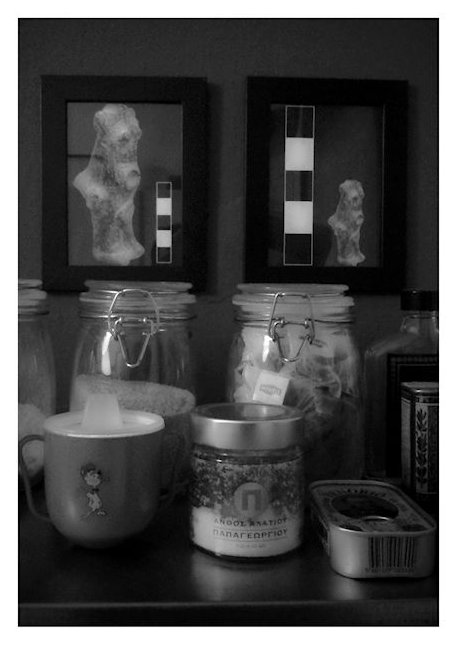
Cite this as: Ifantidis, F. (2015) A Figurine and its Scale, a Scale and its Figurine, Internet Archaeology 39. http://dx.doi.org/10.11141/ia.39.10
As a prehistoric archaeologist, I still have many doubts about a deliberate 'death-by-fire' of the Neolithic south-east European households, one of Ruth Tringham's arguments made in her article in the prominent Engendering Archaeology volume (Tringham 1991). It was what she termed an aha experience though — the faceless Neolithic people and the need to engage in the study of a prehistory 'with faces' — and moreover, the photographs of Yugoslavian farmers from the front and from the back in the article that mattered to me most.

Back in 2013, after gifting her my Archaeographies photobook (Ifantidis 2013), based on my photoblog visualizingneolithic.com, a friend voiced her discomfort at my cropped (and faceless) photos from the excavation of the Neolithic site of Dispilio, Greece. That was my aha experience.

I was taught to think of archaeological photography as faceless, a to-scale and accurate depiction of ancient artefacts and sites but these rules only apply to one part of archaeological photography, the 'official' one (Shanks 1997; Hamilakis et al. 2009).
Although less eligible for inclusion in an academic publication, a myriad of 'hidden' images are slowly emerging out of the dark room. They are the currently digital (cf. Sassoon 2004) archives of photos of extra-excavation/lab time, the scaleless, the staged or random, the out-of-focus shots of interactions between people and things out of (or perhaps in) the so-called archaeological context (cf. Bateman 2005). Archaeological photoblogging seems to be a natural outcome of this process.

Verba volant, scripta manent
Spoken words fly away, written words remain (Latin proverb)
The present Internet Archaeology issue unfolds the potential and many strengths of archaeological blogging; immediacy, comment-ability, delete-ability versus stability, space restriction, even censorship, to name but a few of the easily discerned differences between digital and printed media. Nevertheless, I decided to publish part of my relatively long-running photoblog (2006-present) in printed format, my intention being to treat these photographs as tactile objects (Edwards and Hart 2004); photos that were, as a result of costs, printed in black-and-white and not to a uniformly high standard, but which were at least not in danger of becoming broken links. Perhaps this was also a way to officialise a 'scripta manent' version of some of the posts − although the actual written words deliberately numbered less than 150.


Words are always problematic when put next to a photograph – and blogging is no exception.


These (merely fictional) statements, questions and commentaries (both online and offline) give some glimpses into the process of the production and consumption of the visualizingneolithic.com photoblog over the years. In fact they could act as alternate captions of some of the photo posts. Though the excavation of a Greek Neolithic site is the strict focus of the blog, I would expect the above to be repeated in almost any other 'case study'; not to mention the contradicting reactions generated by the same photo in different contexts: in a glossy coffee-table book, as a large art gallery exhibit, as a forgotten .jpg computer file or as a photopost narcissistically craving more likes.
My archaeological research area is personal adornment; knowing the exact dimensions of minuscule beads and pendants is an important factor to consider. A clear scale is what I expect to find in a bead photo.

I keep reminding myself though, that defining the studium and the punctum is not just a matter of scale.
